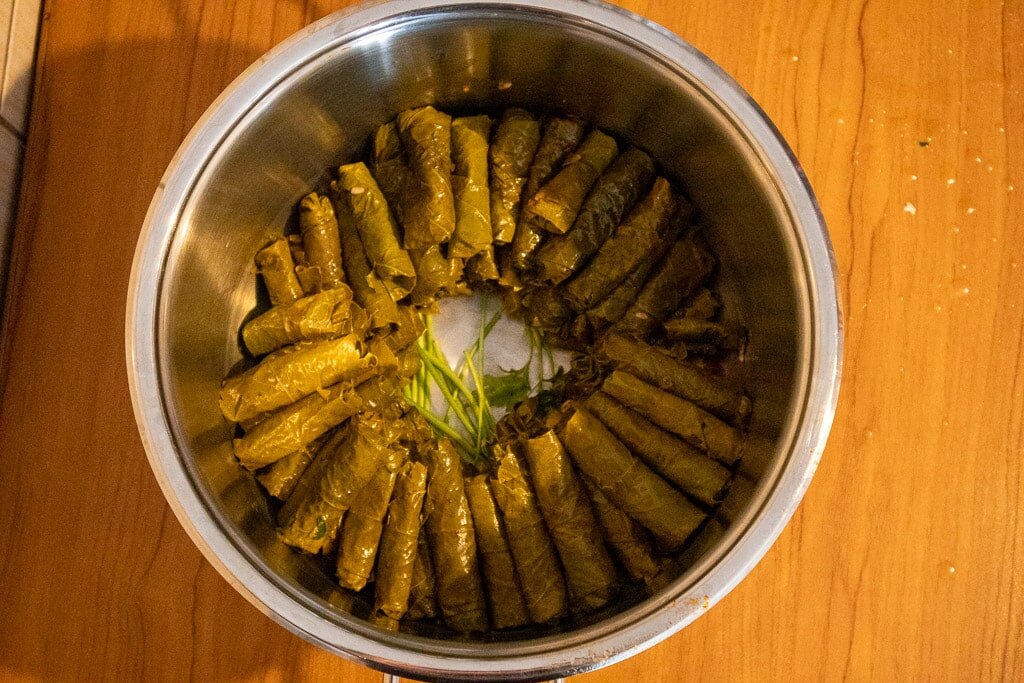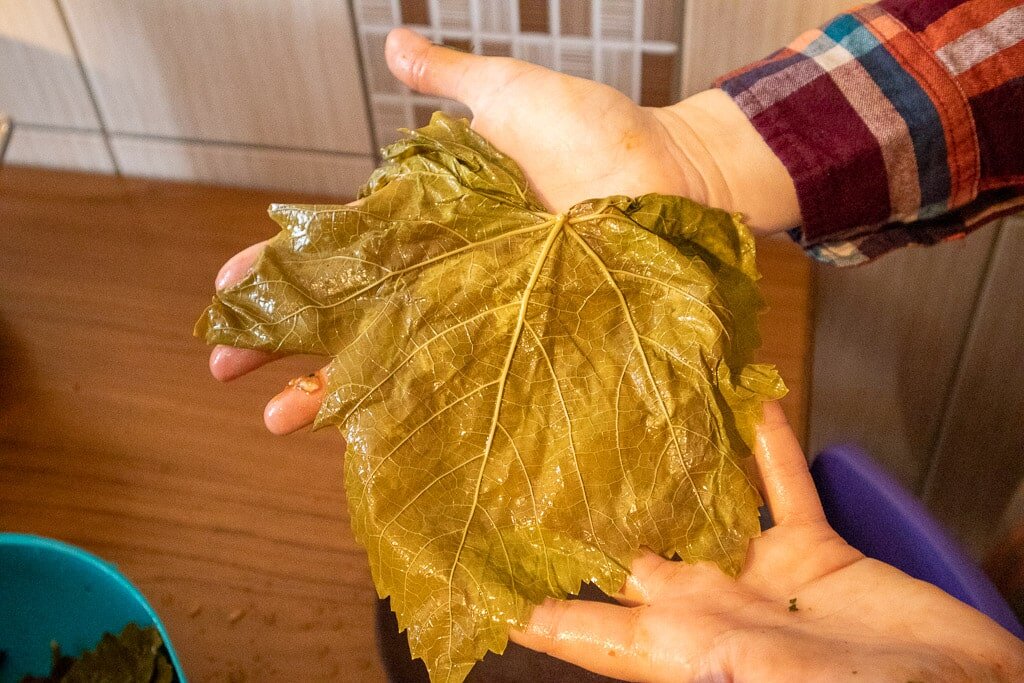Cooking in Turkey: Sarma
Growing up in the American South, I remember cross-stitch wall hangings declaring the kitchen as the heart of the home. The kitchen was the room we spent the most time in together--chatting with mom as she cooked, sitting down for three square meals a day, hosting guests for appetizer parties, Sunday dinners, and holidays. While of course these all revolved around the food that was lovingly prepared and brought to share, the relational aspect of cooking and eating together was the "heart" that those cross-stitch hangings were referring to.
With six kids to feed, my dear mother spent a lot of time preparing food. Sometimes she invited friends over to do "once-a-month-cooking" together. They would meal prep all day and each go home with a month's worth of dinners to put in the freezer. Again, while these days consisted of a lot of work going on in the kitchen, the "main event" was the sweet friendship and conversation between these hard-working moms.
As different as Southern and Turkish cuisine are, they do have this one very important thing in common--they both center on relationships. They aren't in a hurry to throw something on the table, rather they value the time spent both preparing and enjoying the food together.
Dilek, (whom we affectionately refer to as "Abla", or, "big sister"), is a great cook and a great friend. From time to time we get the chance to prepare a Turkish dish with her. We've written before about making bread with Abla, but this last time we saw her we asked her to teach us how to make sarma (sar-mah), or, stuffed grape leaves.
I remember the first time I tried sarma. It was so very different from anything I had eaten before. These Southern tastebuds were not prepared for the tomato and pepper paste-infused rice and veggie mixture wrapped up in that bright, bitter grapeleaf and seemingly dripping with olive oil. The first bite was a surprise, the second, third, and following bites were a delight. It has long been one of my favorite dishes of Turkish cuisine, and variations of it are found throughout different parts of the country and even from kitchen to kitchen. Everyone makes their sarma just a little bit different. Some add meat, some don't use tomato paste, some put in extra red pepper flakes, some use currants. The first person to ever feed me their sarma proudly took great pains to point out how tightly she had wrapped it, while my downstairs neighbor's plate of sarma was falling apart even before my fork touched it. I can honestly say, though, that I have never met a sarma I didn't like.
However it is made, sarma takes time and effort. I have had friends explain that they often will call a neighbor or a relative over to help make it so that they can cut the prep time in half. As Abla showed us step by step how to make the filling and wrap it up inside each leaf, I could understand why. From getting the right amount of filling, to making sure you were wrapping the leaf right-side-up, to trying to roll tightly without breaking the leaf, every step in the process took concentration! Each one of those little rolls represented care and detail.
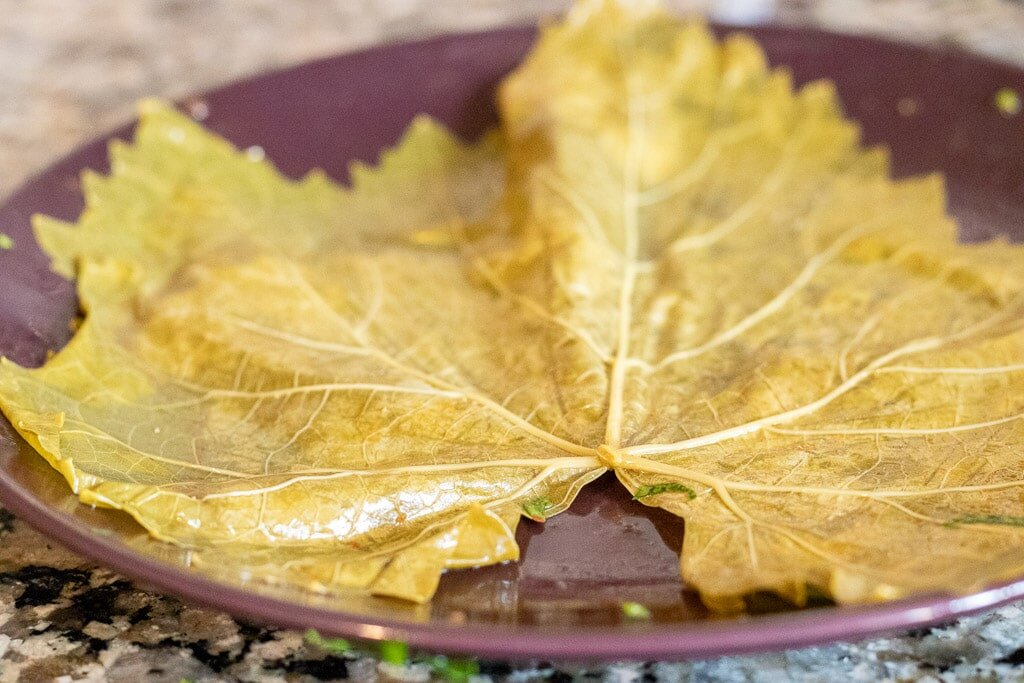


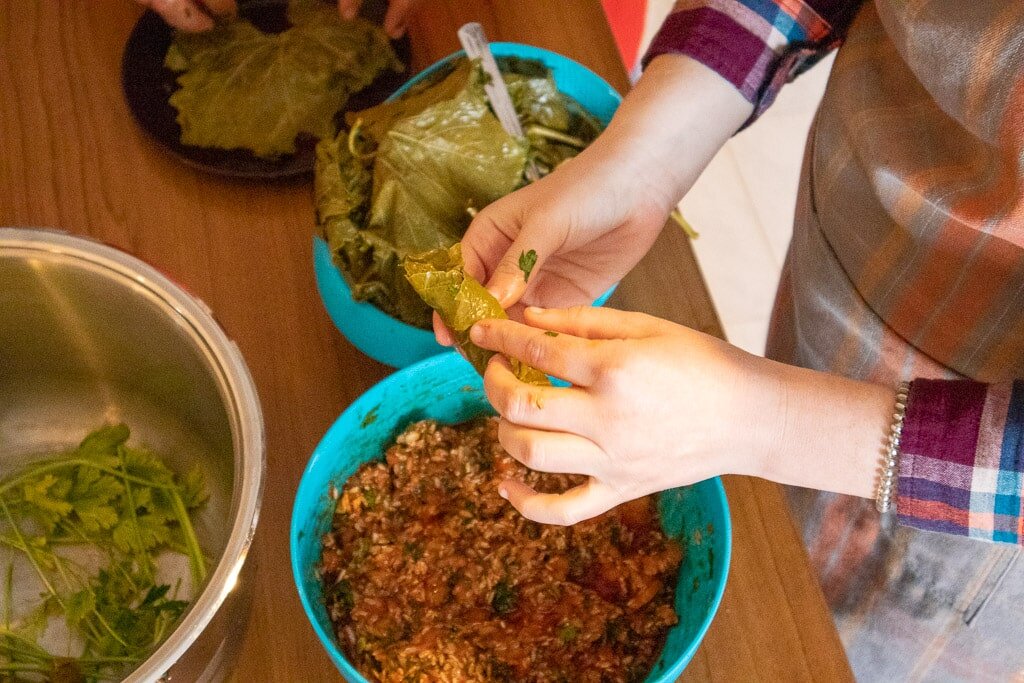
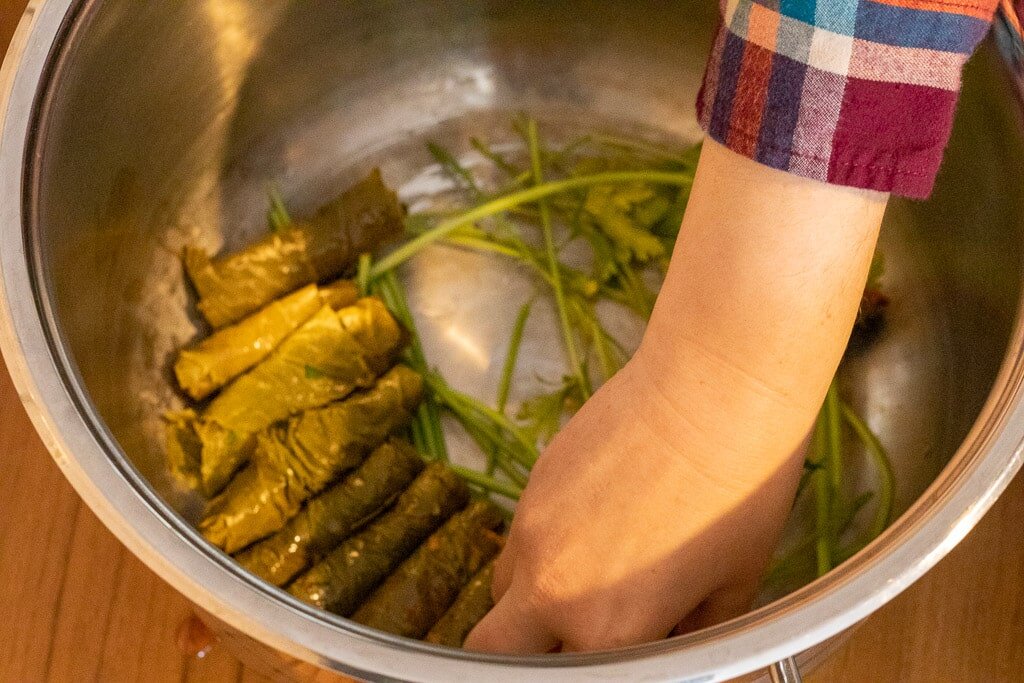
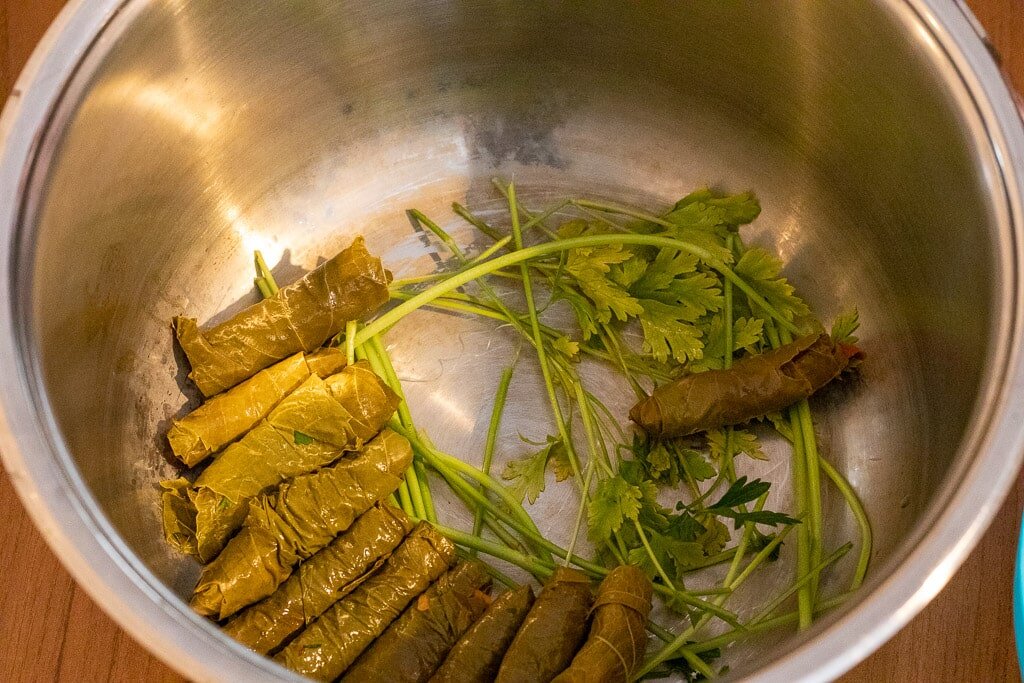
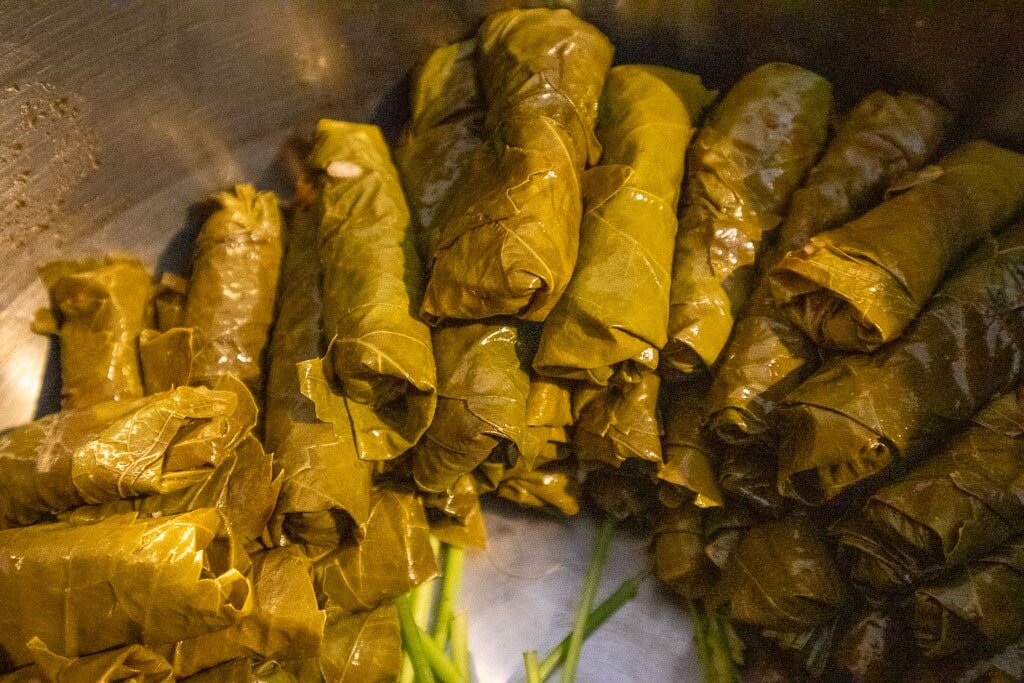

To make the filling Abla first mixed together rice (pre-washed so the grains wouldn’t stick together), finely chopped onions and garlic, tomato paste, pepper paste, olive oil and vegetable oil, cumin, red pepper flakes, and salt and pepper. She used her hand to mix all of this and said that the important part of this step was for the oil, spices, and rice to "find each other."
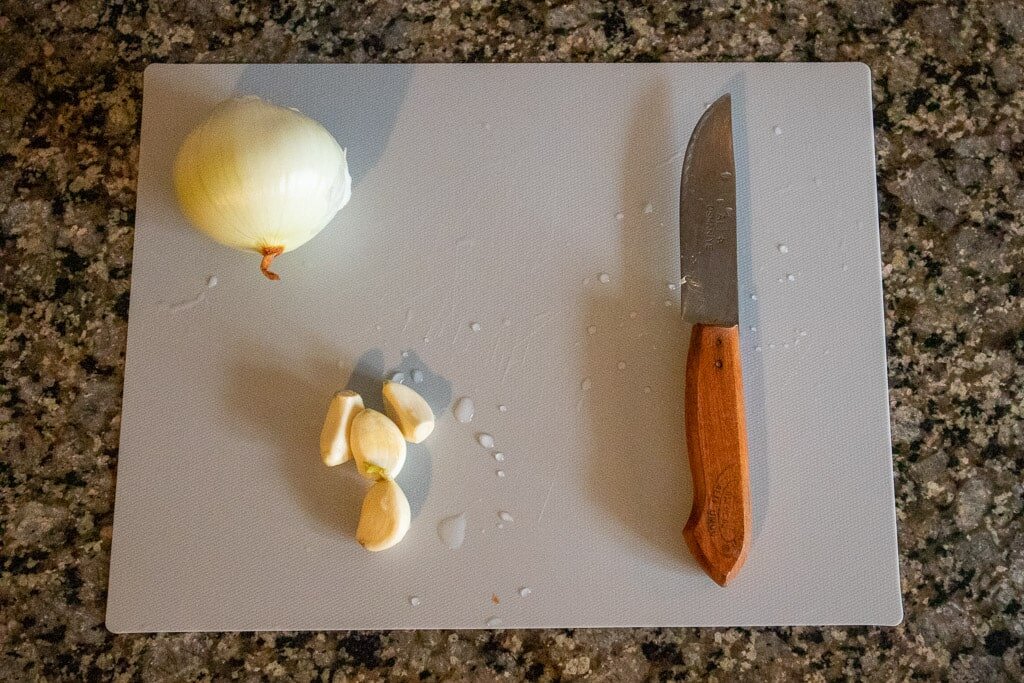
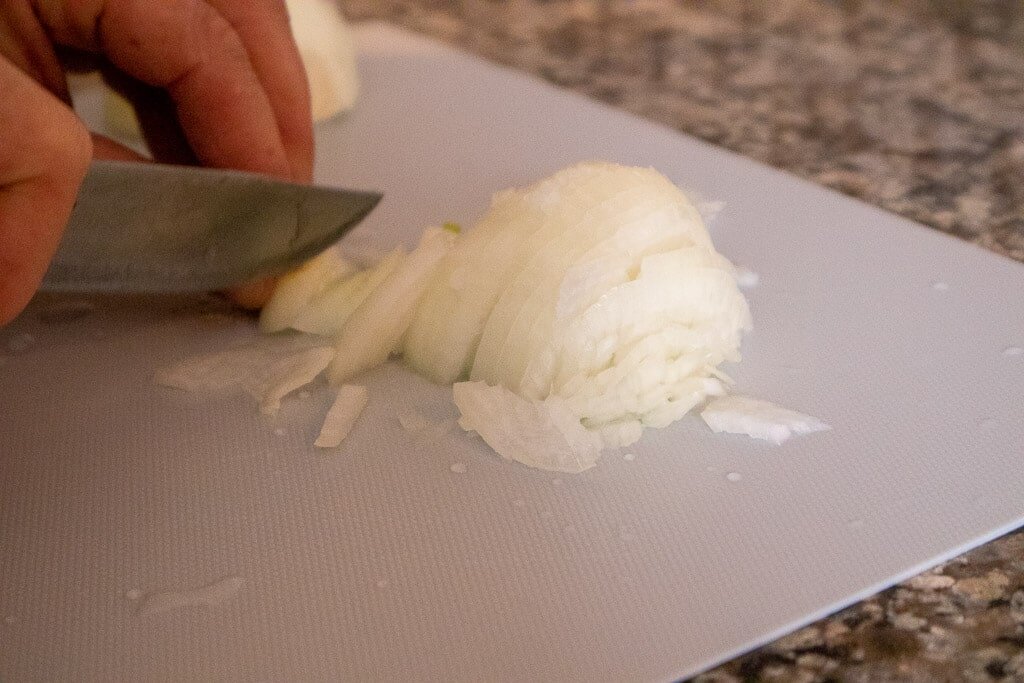
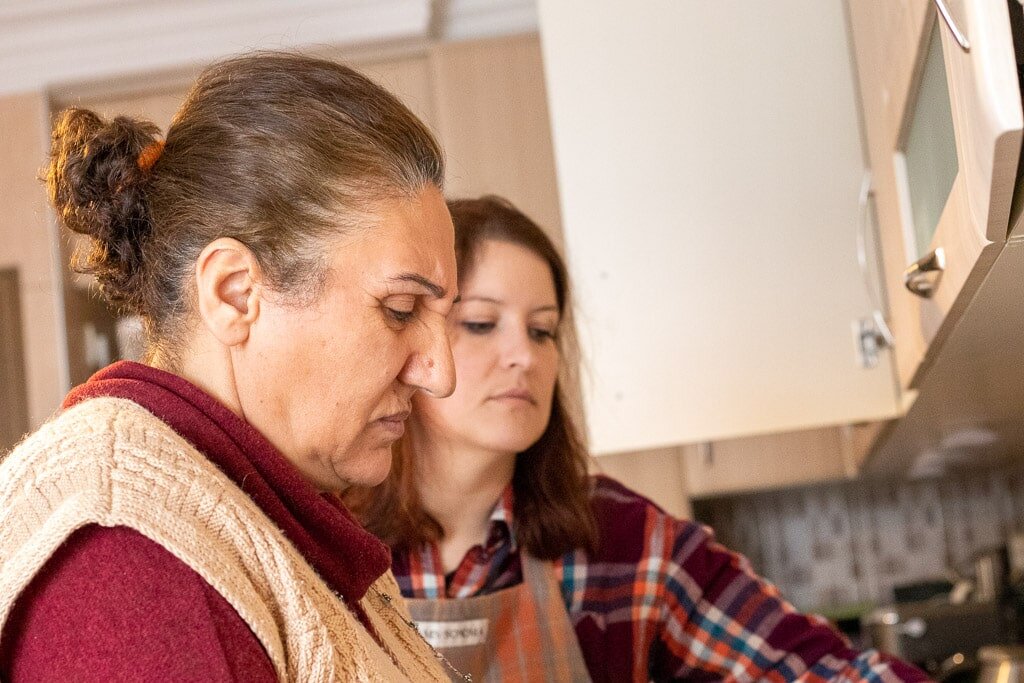

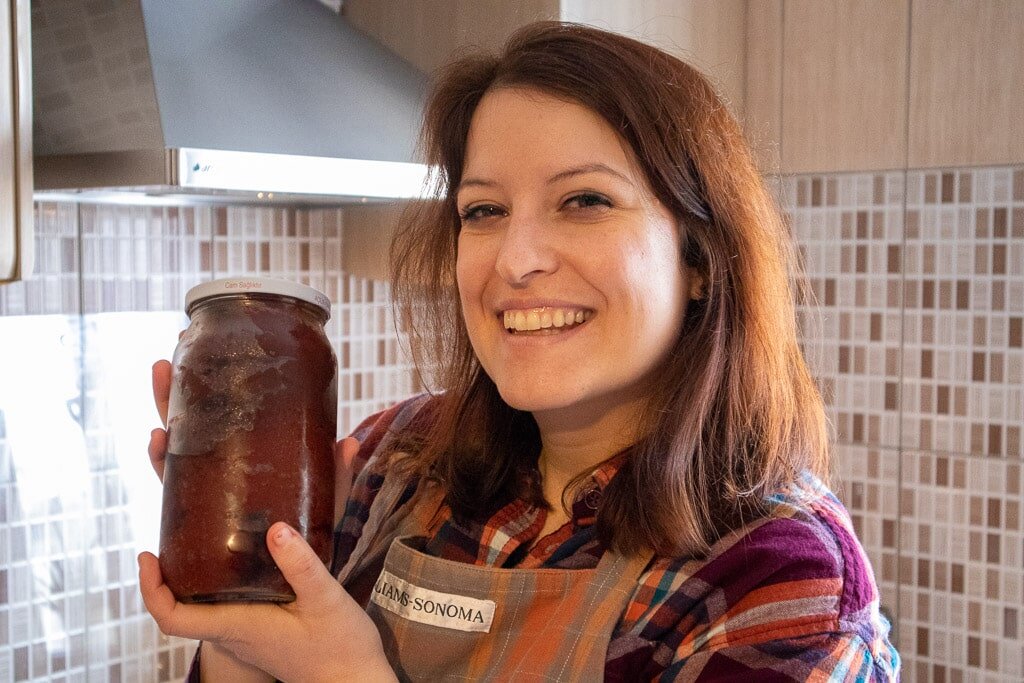
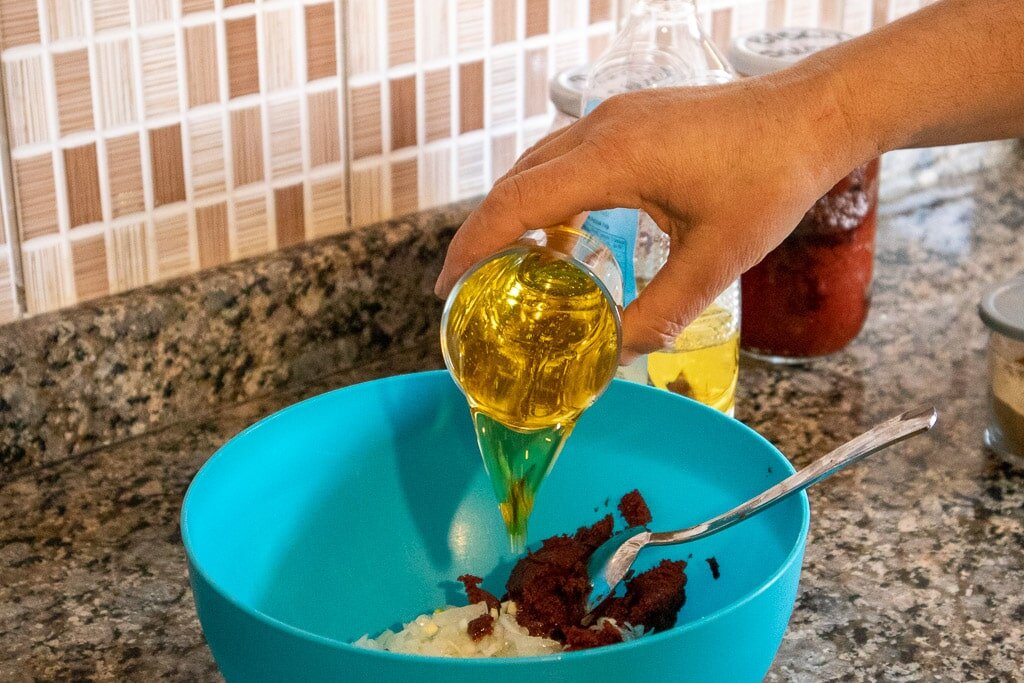
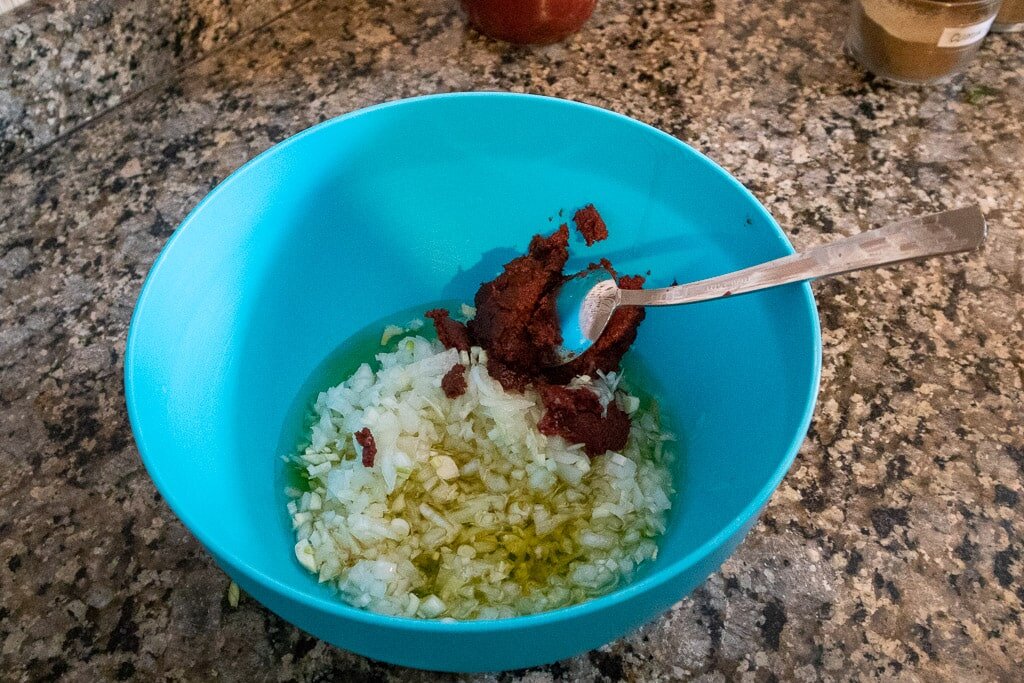
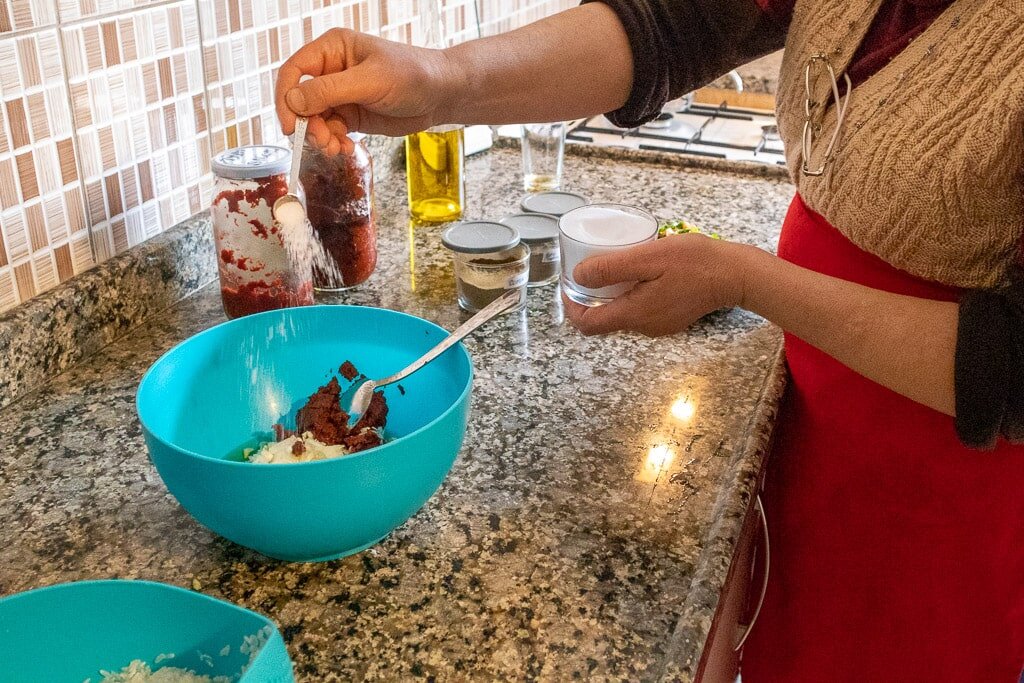
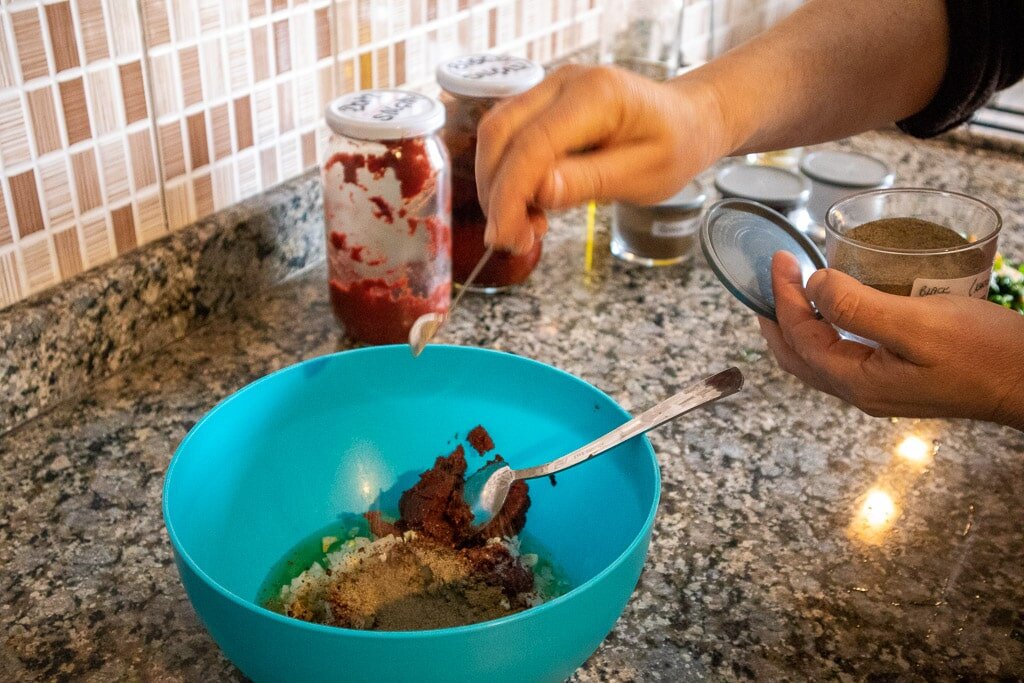
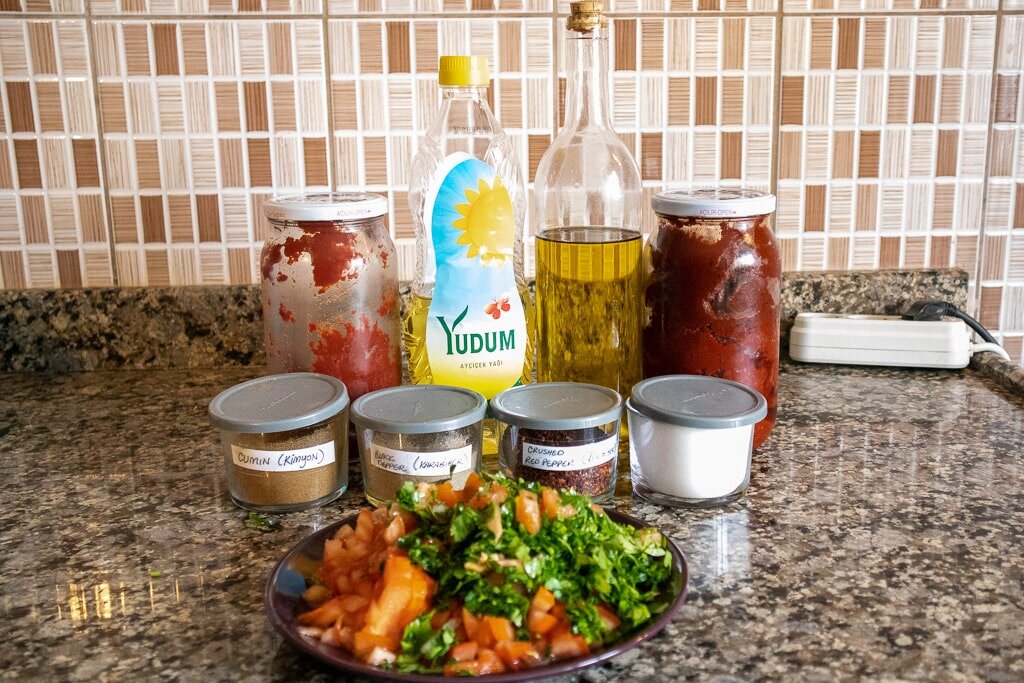
Into this mixture she then added finely chopped tomatoes and parsley. Abla insisted that you absolutely CANNOT make sarma without parsley. Whatever ingredient might be missing from your pantry at the time you go to make it, if you do not have parsley, she said, you might as well give it up.
After mixing these ingredients well by hand we turned our attention to the grape leaves. I had purchased brined grape leaves from a friend last year whose mother has a farm in Tarsus. Apparently grape leaves from Tarsus are the standard for sarma. They are huge, good quality leaves. Per Abla's instructions, I had soaked the grape leaves in cold water overnight to remove some of the saltiness.
Abla explained that it is important to roll the grape leaves with the veins facing inward, as shown below. This makes the rolls look prettier. No one wants to take a big bite of veiny leaf, she explained.
Veiny side
Smooth side
After removing the stem, we spread a small amount of filling at the base of the leaf, folded the edges over the filling, and rolled straight up to the top. As simple as that sounds, between the oiliness of the filling and the general inexperience of this Southern girl's hands, you could definitely tell the difference between my rolled grape leaves and Abla's!
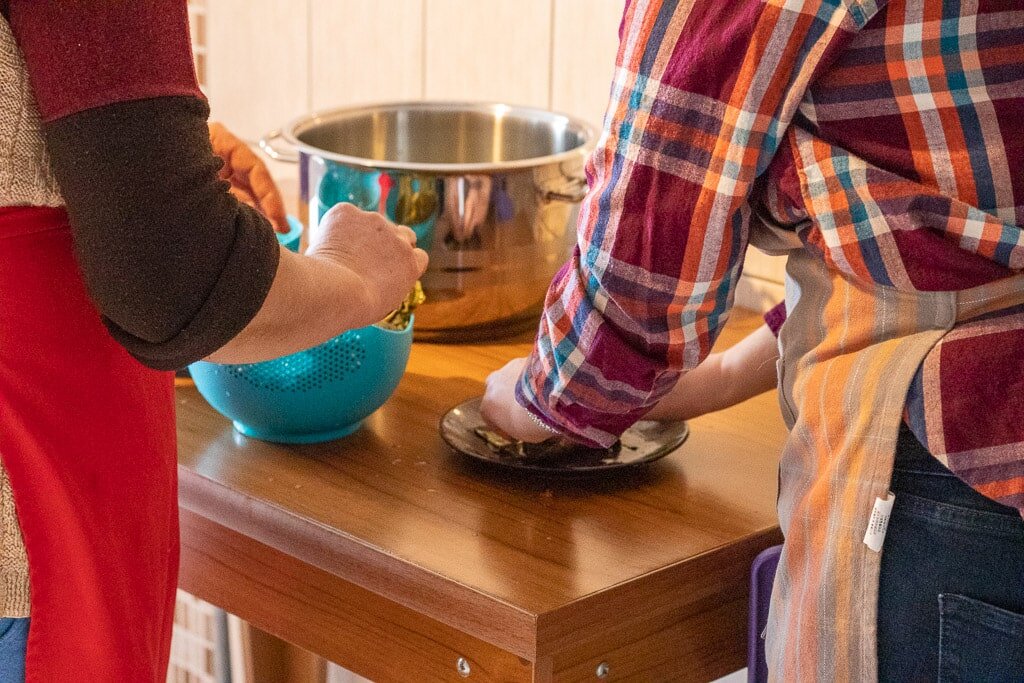
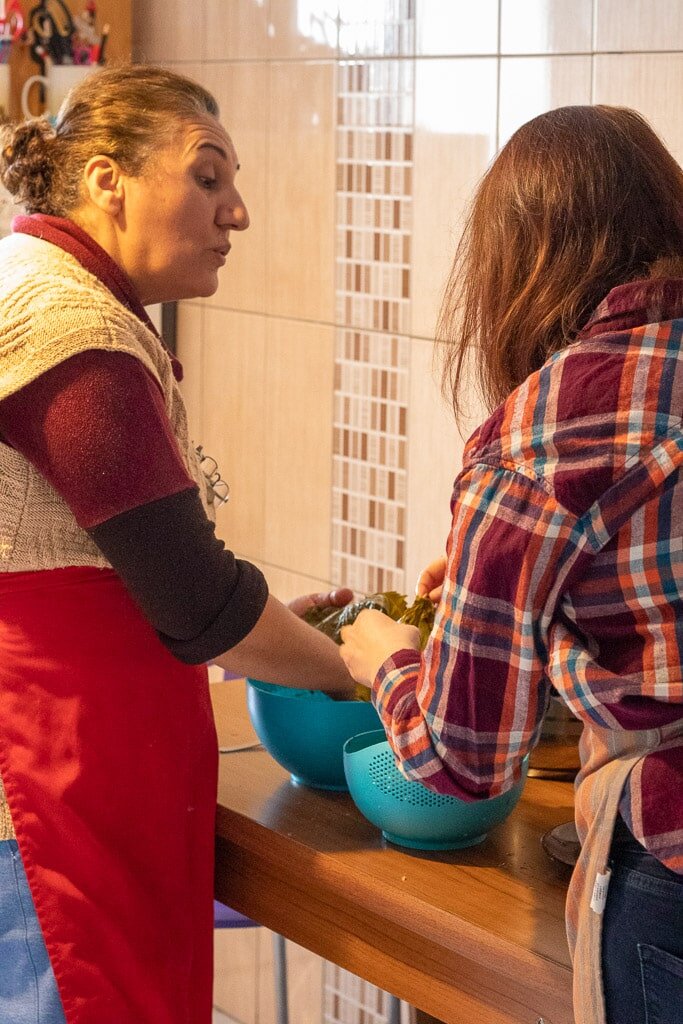
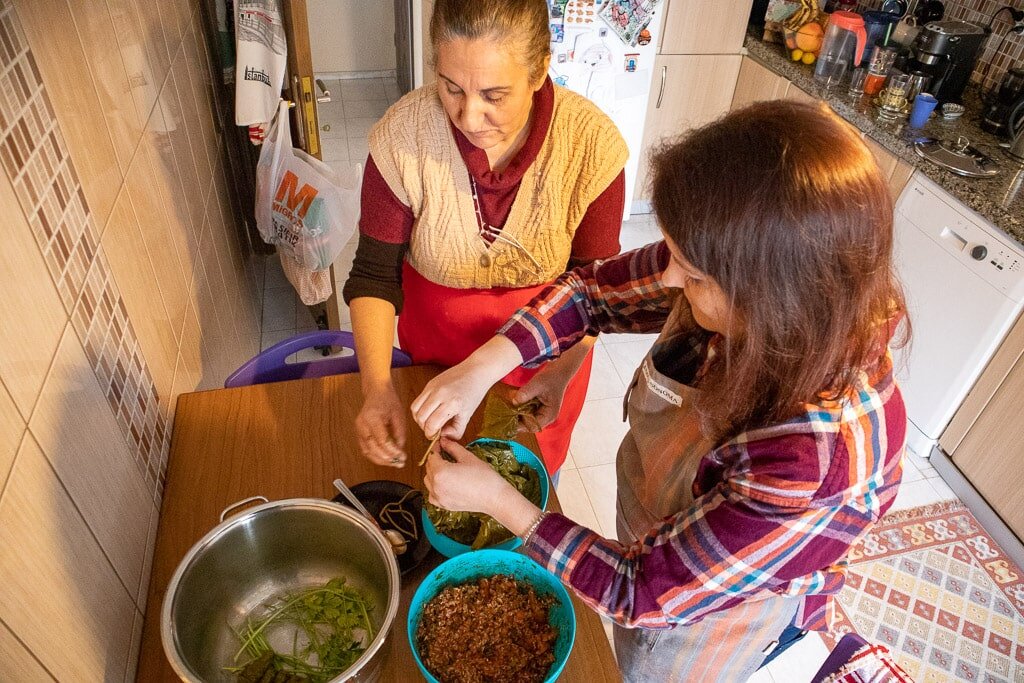
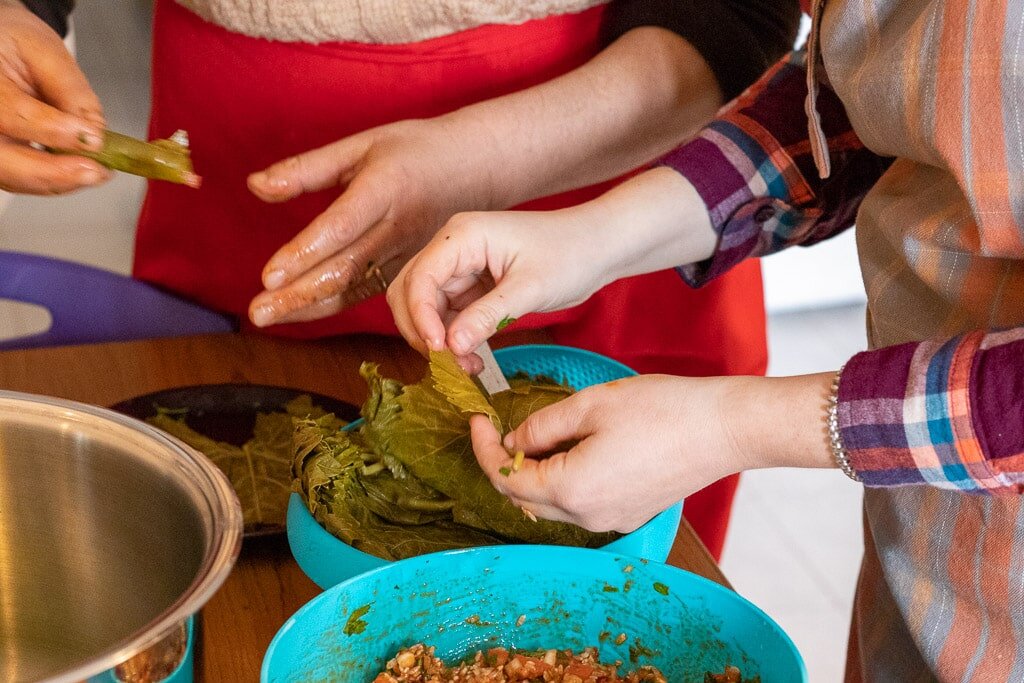
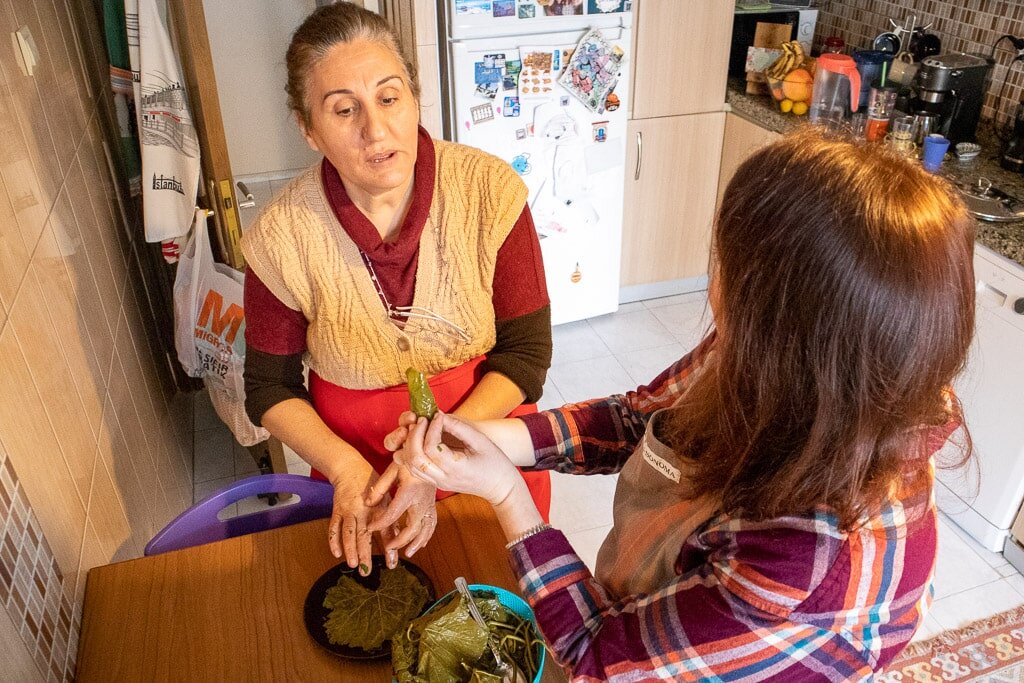
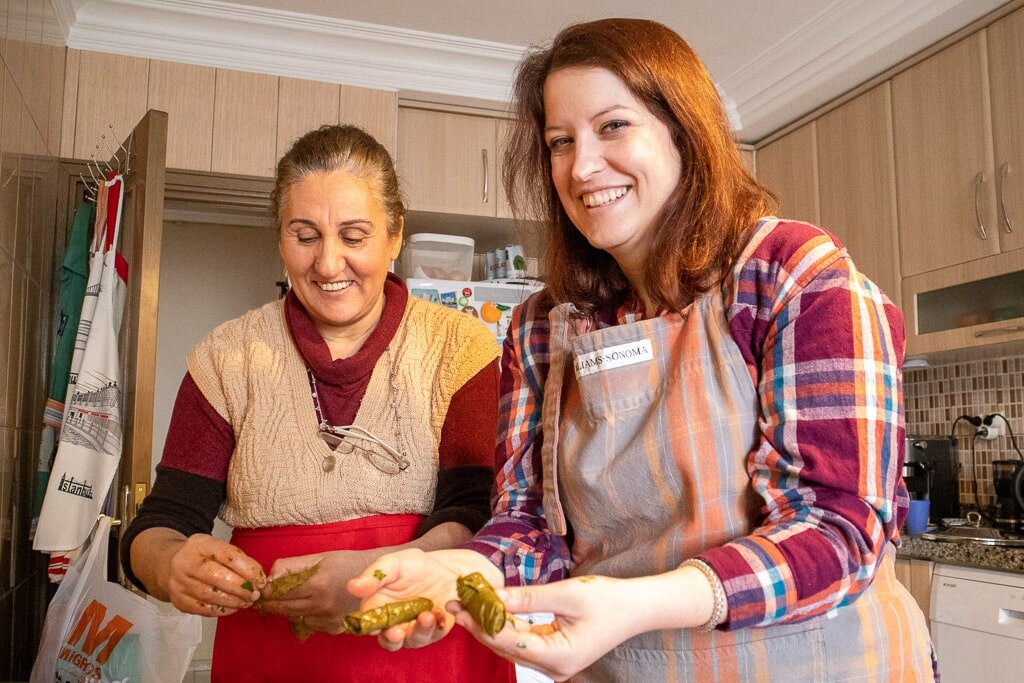
Still, we persevered until our over-sized pot started to fill up. I didn't count the amount of grape leaves we filled, but it took quite awhile.
Once we had rolled all of the leaves, we added in water proportionate to the amount of rice we had used. Then Abla took a dinner plate and placed it upside down on top of the rolls to hold them in place. We then covered the pot and set it on the stove. The sarma cooked for about an hour, then cooled on the stove for another.
When we finally served it up, the end result was absolutely delicious, and absolutely worth the time and effort put into making it, but the sweetest part was getting to make it together, getting to enjoy it together.
Growing up my mom and older sister always teased me about trying to escape the kitchen during cooking. I didn't particularly enjoy prepping food--at least not nearly as much as I did eating it! I didn't understand how my mom could seemingly enjoy spending so much time in the kitchen. But since moving to Turkey I have grown in my appreciation of the care and time required to make good food. I think I am also starting to appreciate more the together-ness of making food that both my home culture and this culture value. As I think about Leslie, Abla and myself standing around the table prepping those grape leaves, laughing together and enjoying the work, I don't think we are that different from my mom's once-a-month-cooking dates with her friends. They, too, laughed together and enjoyed the work that good food requires--but more importantly, they enjoyed the sweet friendships among them.
To our friends in the West, Keep Looking East!
Ginny Lou Henley
Ginny Lou is a co-founder of West2East. Originally from Alabama, Ginny Lou has called Turkey home for the past nine years. To read more about her, click here.

